





Pedestrian Crossing - Signalised
Most pedestrian crashes occur while the pedestrian is attempting to cross the road. A range of treatments can help pedestrians to cross safely, including the use of signalised pedestrian crossings.
Signalised pedestrian crossings consist of signal displays, line markings and lighting. Signalised pedestrian crossings give priority to vehicles, and pedestrians are allowed to cross only when the signals halt vehicle traffic on the through road. Signals must be timed to give pedestrians long enough to complete their crossing before the signals change to allow vehicle traffic to start passing through the crossing again.
Signalised pedestrian crossings benefit visual and mobility impaired users by ensuring stoppage of traffic.
A high volume of pedestrian traffic is needed to justify the delays to road traffic that signalised pedestrian crossings cause. Also, signalised pedestrian crossings rely on compliance with traffic signals, which is poor in some regions.
Signalised crossing can be used at midblock locations, or incorporated into existing traffic signals at intersections. Pedestrian phasing should be considered at all signalised intersections where pedestrians are likely to be present.
Signalised pedestrian crossings may incorporate a raised feature (raised crossing) designed to slow the speed of approaching vehicles.
- Improved crossing facilities for pedestrians.
- Reduced pedestrian crashes.
- Pedestrians will only use crossings located at, or very near, to where they want to cross. Pedestrian fencing can be used to encourage use of pedestrian crossings.
- Through traffic must be able to see pedestrian crossing points in time to stop for them. Advance warning signs should be used if visibility is poor and when the presence of a crossing may not be expected by drivers.
- The length of crossing should not be excessive, otherwise mid-block refuges may need to be provided.
- Green signals should be sufficiently long to clear all waiting pedestrians and is not less than 5 seconds. Lower walking speed down to 0.9m/s should be considered for design purpose if pedestrian volume is high or there is frequent usage by impaired pedestrians.
- Staggered crossings should be avoided as pedestrians need to wait at mid-block islands and become exposed to errant vehicles.
- Traffic calming with reduced speeds is desirable at signalised pedestrian crossings to increase the feeling of safety among pedestrians and to limit the consequences when collisions with pedestrians happen.
- Pedestrian activated signals may be adopted on lightly used signalised crossings, However, the public should be well-educated to use them.
- Parking should be removed from near pedestrian crossings to provide adequate sight distance.
The Star Rating Demonstrator is a freely available tool with the iRAP online software, ViDA. With the Star Rating Demonstrator, it is possible to explore the impact that this Safer Roads Treatment has on risk.
Treatment Summary
Costs | Medium |
Treatment life | 10 years - 20 years |
Potential casualty reduction | 25-40% |
Case Studies
Related Images
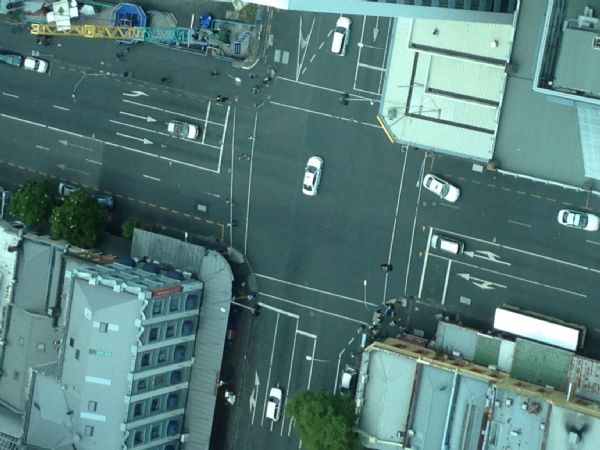 A 4-leg signalised intersection, Auckland, New Zealand. Image credit: Unknown
A 4-leg signalised intersection, Auckland, New Zealand. Image credit: Unknown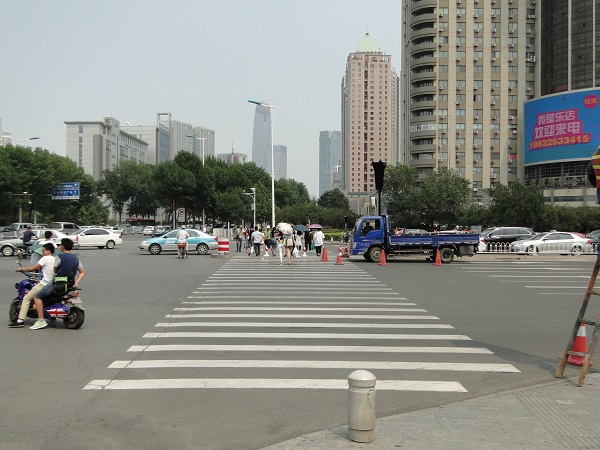 A long signalised pedestrian crossing in China. Image credit: Greg Smith
A long signalised pedestrian crossing in China. Image credit: Greg Smith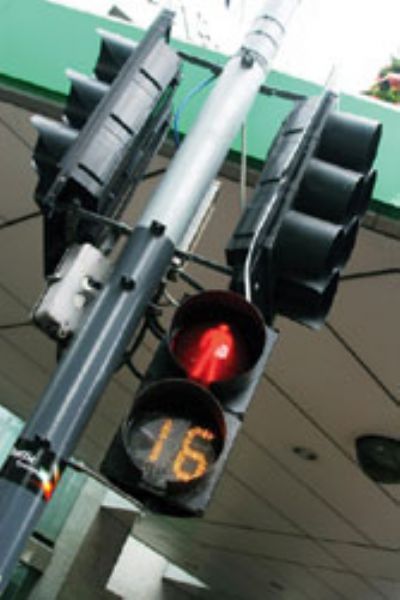 Pedestrian crossing countdown in New Zealand. Image credit: Unknown
Pedestrian crossing countdown in New Zealand. Image credit: Unknown A pedestrian crossing signal in UK. Image credit: Unknown
A pedestrian crossing signal in UK. Image credit: Unknown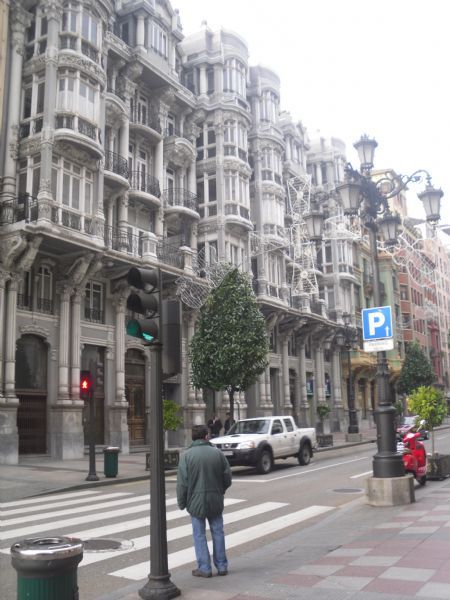 A signalised pedestrian crossing in Oviedo, Spain. Image credit: Luke Rogers, iRAP
A signalised pedestrian crossing in Oviedo, Spain. Image credit: Luke Rogers, iRAP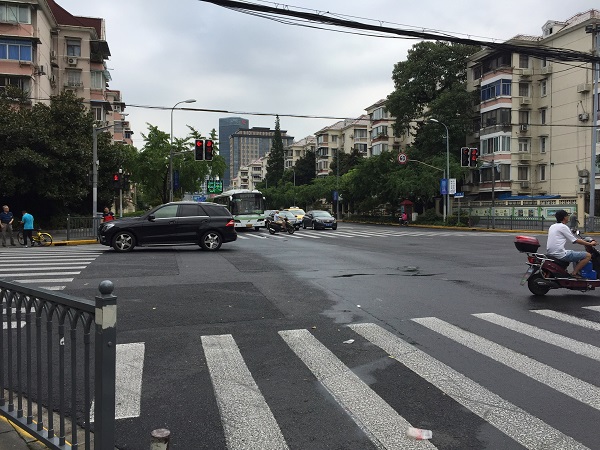 Intersection in Shanghai, China. Image Credit: Monica Olyslagers
Intersection in Shanghai, China. Image Credit: Monica Olyslagers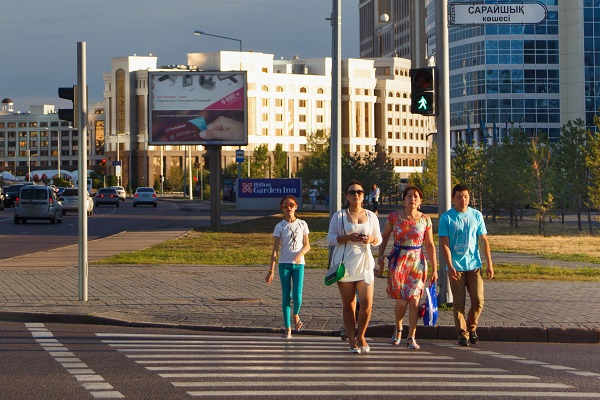 Signalised pedestrian crossing in Kazakhstan. Image credit: Anvar Matkarimov
Signalised pedestrian crossing in Kazakhstan. Image credit: Anvar Matkarimov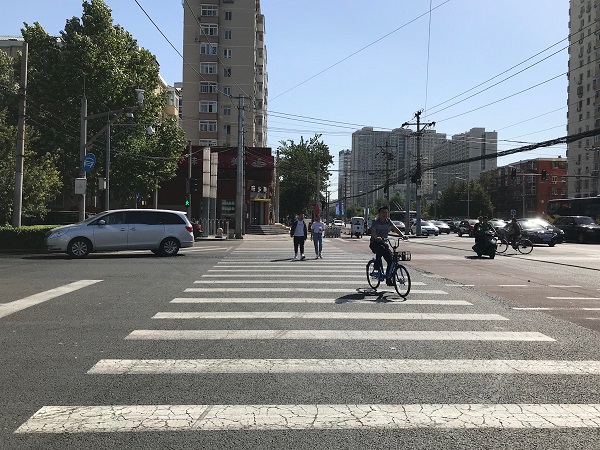 Pedestrian crossing in Beijing, China. Image Credit: iRAP
Pedestrian crossing in Beijing, China. Image Credit: iRAP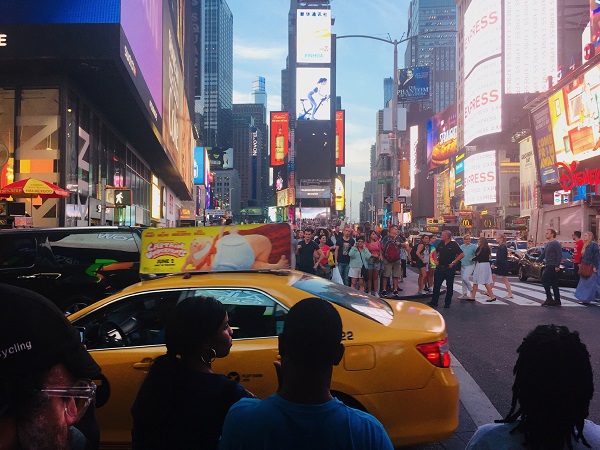 Pedestrian crossing in New York USA. Image Credit: iRAP
Pedestrian crossing in New York USA. Image Credit: iRAP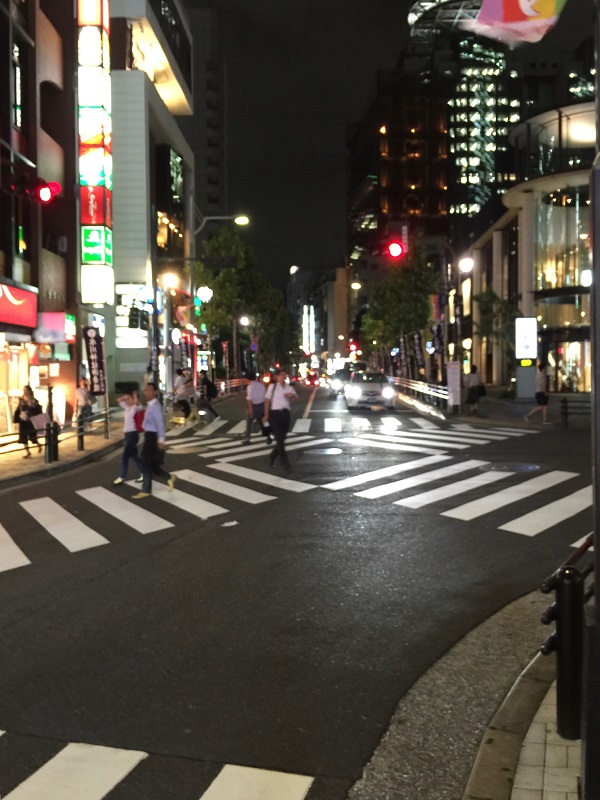 Diagonal pedestrian crossing facility in Tokyo, Japan. Image Credit: iRAP
Diagonal pedestrian crossing facility in Tokyo, Japan. Image Credit: iRAP Pedestrian crossing in Tokyo, Japan. Image Credit: iRAP
Pedestrian crossing in Tokyo, Japan. Image Credit: iRAP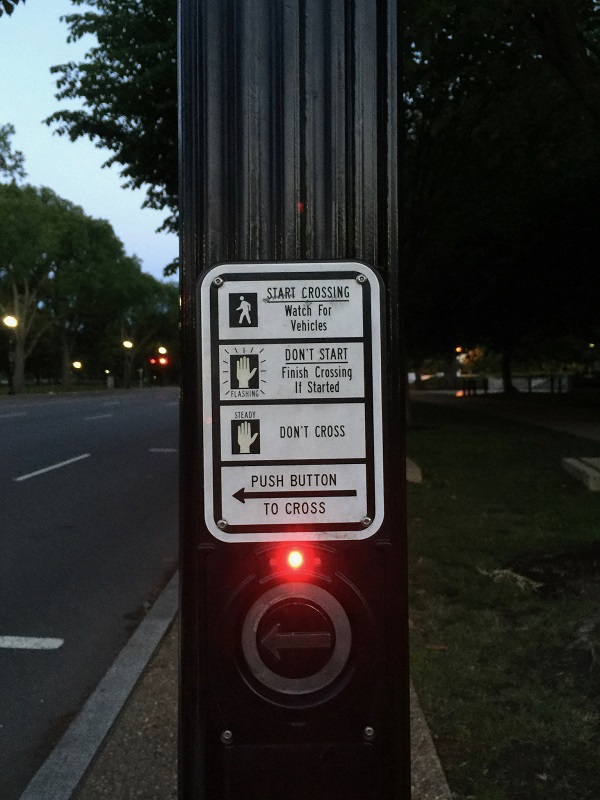 Pelican type pedestrian crossing facility in Washington DC, USA. Image Credit: iRAP
Pelican type pedestrian crossing facility in Washington DC, USA. Image Credit: iRAP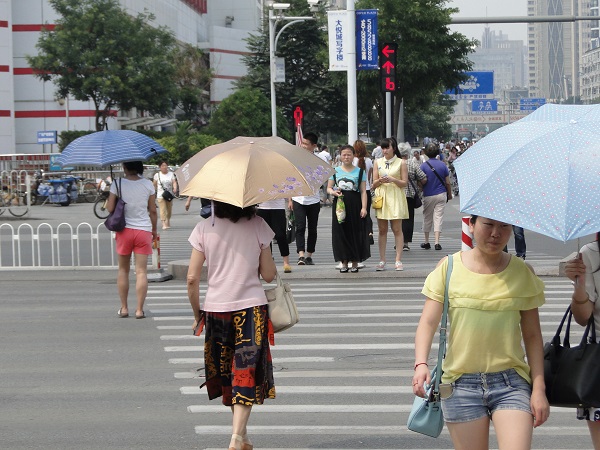 Pedestrians in China. Image credit: Greg Smith
Pedestrians in China. Image credit: Greg Smith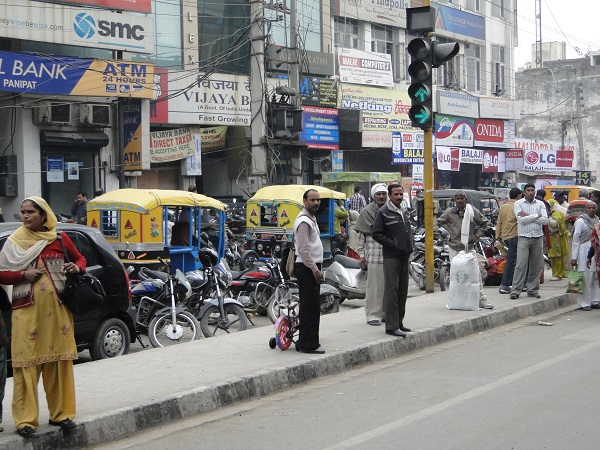 Pedestrians in India. Image credit: Greg Smith
Pedestrians in India. Image credit: Greg Smith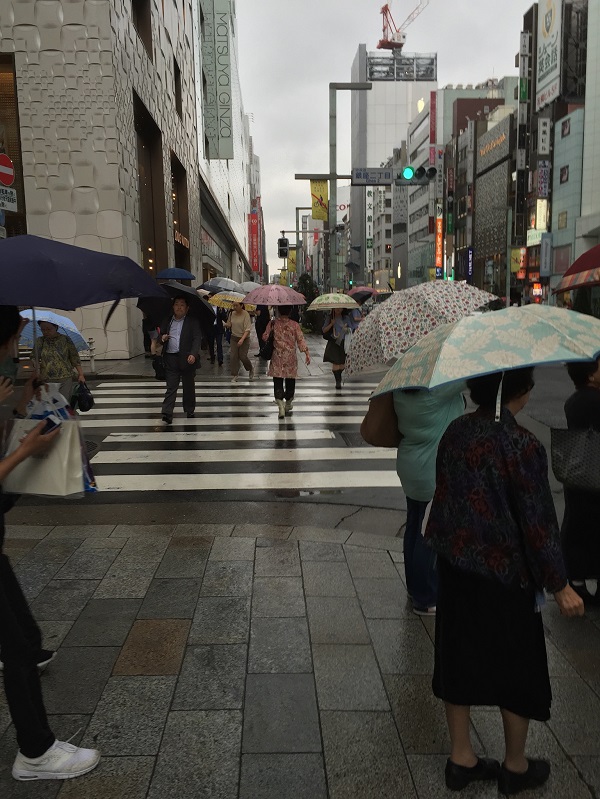 Pedestrians in Tokyo, Japan. Image Credit: iRAP
Pedestrians in Tokyo, Japan. Image Credit: iRAP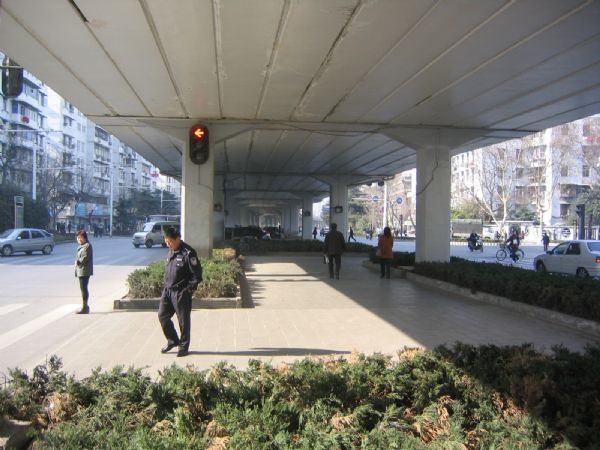 Physical channelisation (and planting) under the flyover to provide a safe refuge for pedestrians to cross the road in two stages. Image credit: Gladys Frame
Physical channelisation (and planting) under the flyover to provide a safe refuge for pedestrians to cross the road in two stages. Image credit: Gladys Frame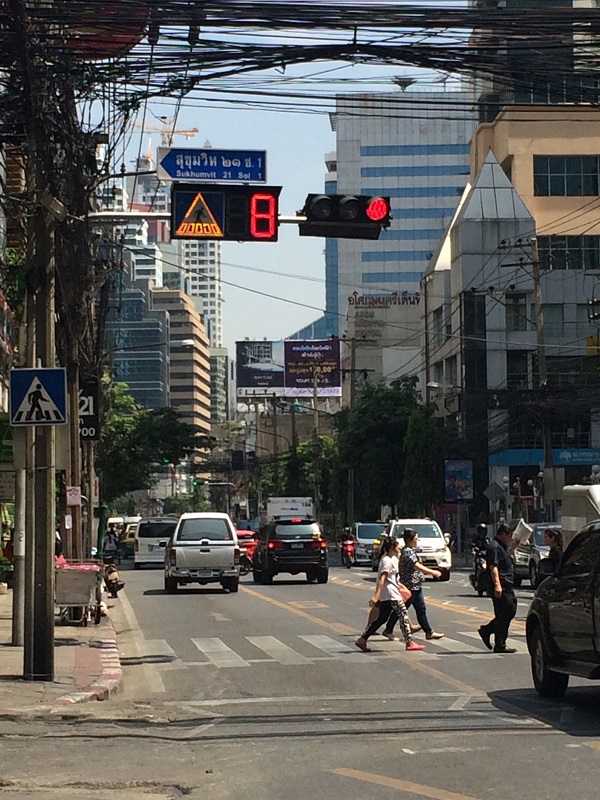 Signalised intersection in Bangkok, Thailand. Image credit: Alina Burlacu
Signalised intersection in Bangkok, Thailand. Image credit: Alina Burlacu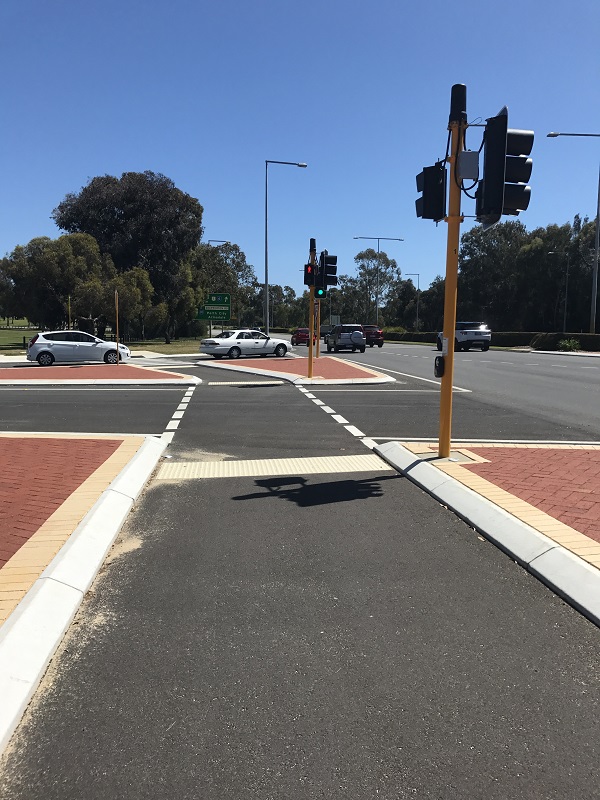 Signalised pedestrian crossing in Australia. Image credit: Alina Burlacu
Signalised pedestrian crossing in Australia. Image credit: Alina Burlacu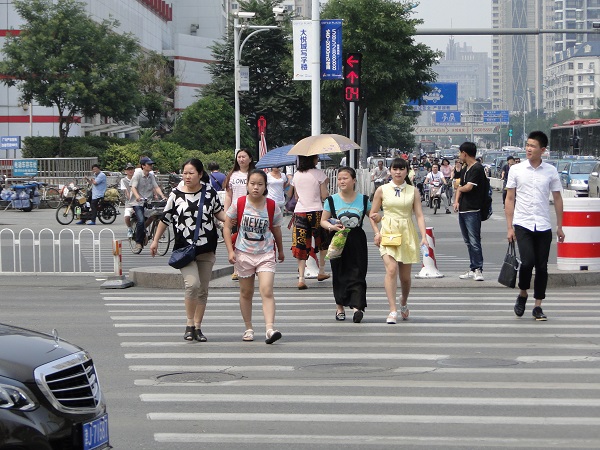 Signalised pedestrian crossing in China. Image credit: Greg Smith
Signalised pedestrian crossing in China. Image credit: Greg Smith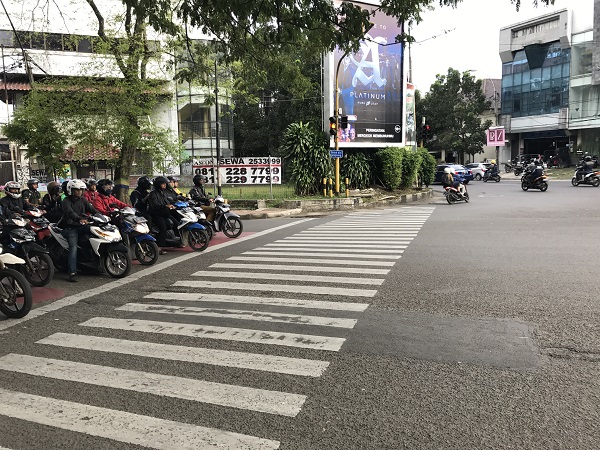 Signalised pedestrian crossing in Indonesia. Image credit: Alina Burlacu
Signalised pedestrian crossing in Indonesia. Image credit: Alina Burlacu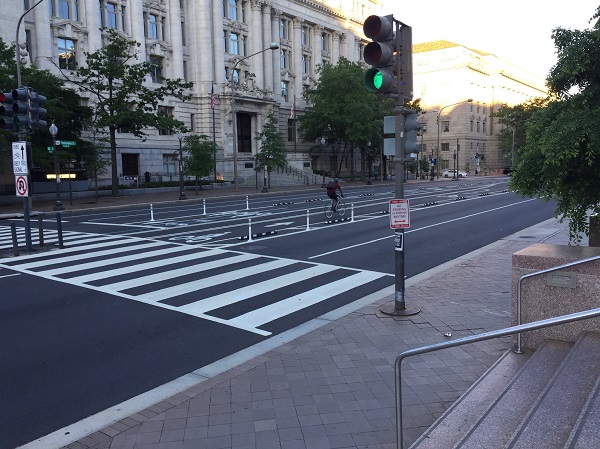 Signalised pedestrian crossing in the USA. Image credit: Unknown
Signalised pedestrian crossing in the USA. Image credit: Unknown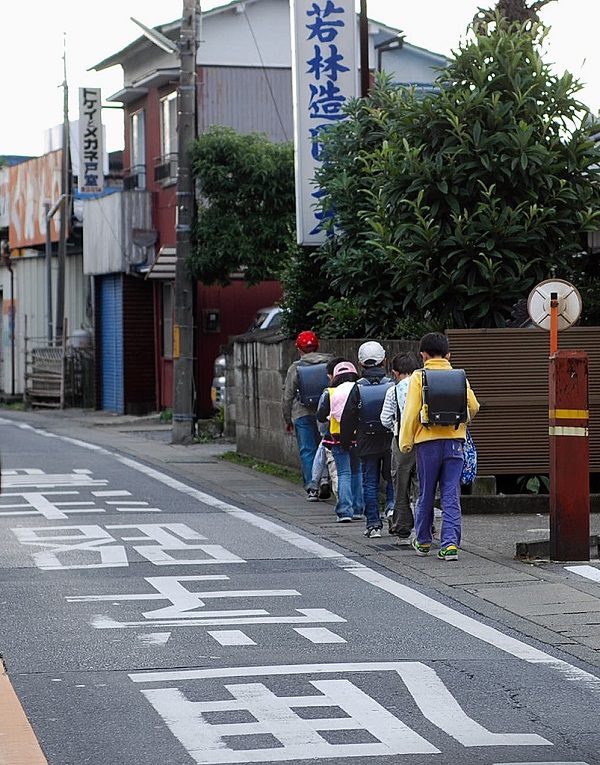 Narrow sidewalk in Japan. Image credit: Michael Martin
Narrow sidewalk in Japan. Image credit: Michael Martin










